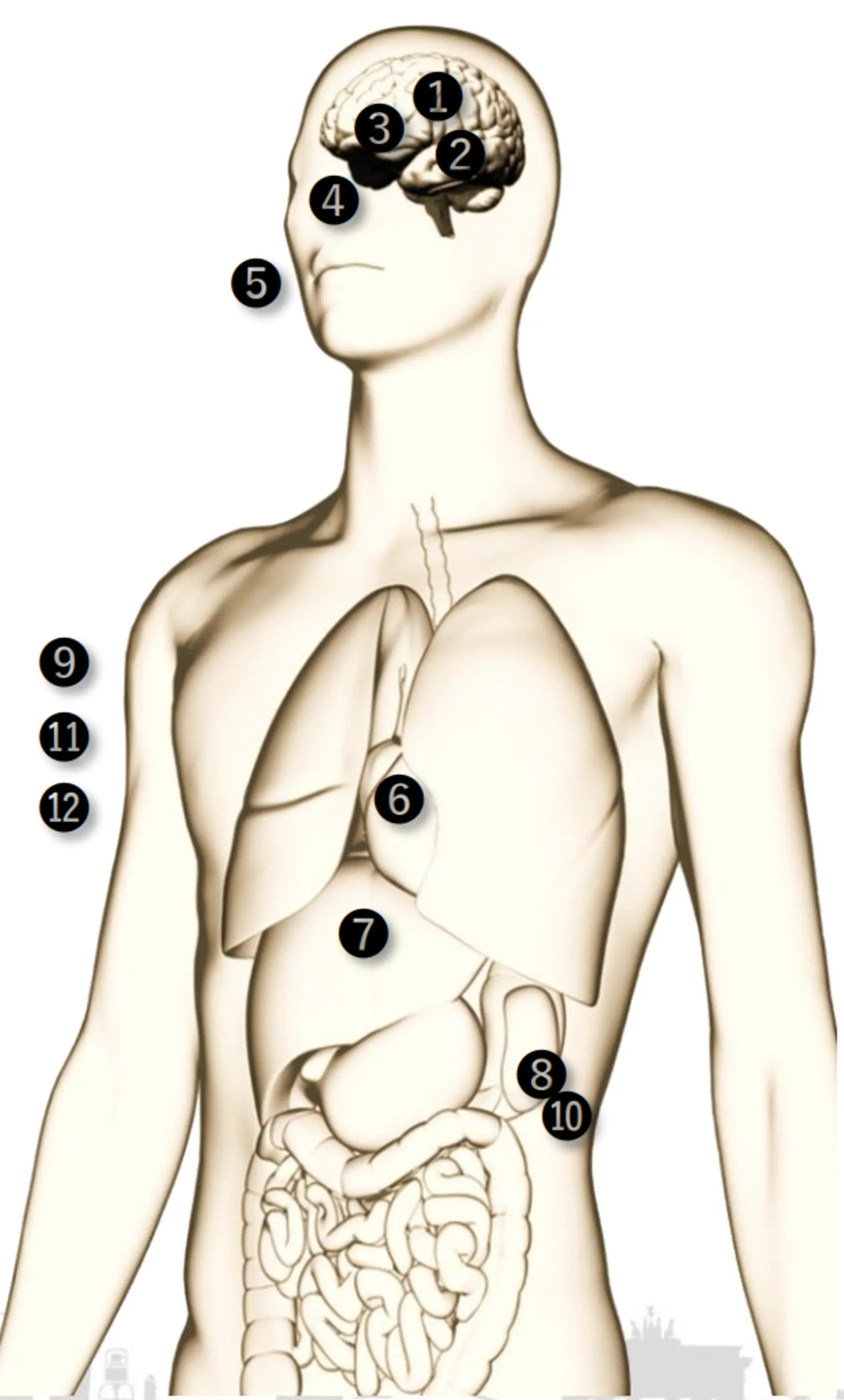L-Ergothioneine—A Stable, Safe, and Powerful Natural Antioxidant
NAGASE is working on fermentative production of the natural antioxidant ergothioneine (Figure 1), which is stable, safe, and can be transported to the brain as well.
What is Ergothioneine?
Ergothioneine (EGT), a rare amino acid, is a natural compound with excellent antioxidant properties. Certain mushrooms (in the class basidiomycetes), fungi such as Aspergillus oryzae, Streptomyces species, and cyanobacteria are the only organisms capable of producing EGT. Humans cannot synthesize EGT in the body, therefore must eat mushrooms or foods fermented by A. oryzae to obtain it. EGT was discovered in 1909,¹ so it has been known for some time, but in recent years it has been found to have interesting properties, and there is evidence that it is promising against diseases involving the brain, the nervous system, and aging.

Fig. 1. L-Ergothioneine (EGT)
Longevity Vitamin
Dr. Bruce Ames (of the famous Ames test) is the leading researcher in aging and proposed “longevity vitamins” as a new group of vitamins which, though are not required for survival, are vital compounds to maintain health in the long term. Ames also noted how EGT may contribute to maintaining mitochondrial activity, and suggested it as a potential longevity vitamin.² With the longer lifespans of the modern era, healthy longevity has become a major concern, and longevity vitamins are likely to become progressively more important.
Clinical research has suggested that EGT is vital to healthy longevity. The decline in mental and physical capability due to aging is known as frailty. In a comparison of EGT levels between people with high frailty and low frailty, those who were frailer had lower EGT levels.³ This indicates that EGT can help to battle aging. It has also been reported in a comparison between countries that the countries which consume the most EGT may have the longest lifespans.⁴
Potential Targets of L-Ergothioneine
- Parkinson’s Disease
- Cognitive impairment
- Depression
- Cataract, Retinopathy
- UV-induced skin aging (Wrinkles, Blotches)
- Cardiovascular disease
- Liver disease (Fatty liver, Fibrosis)
- Kidney disease
- Complications of diabetes
- Pre-eclampsia
- Cancer
- Frailty

Excellent Antioxidant Properties
EGT is an excellent antioxidant, with a capacity for neutralizing reactive oxygen species (ROS) 3 to 30 times higher (depending on the type of ROS) than glutathione, the most common antioxidant in the body.⁵ These powerful antioxidant properties are due to a unique part of the structure of EGT, the thione group (Figure 1). Since oxygen molecules are a type of radical, many antioxidants become unstable when oxygen is present. Since EGT has a thione radical, it reacts quickly to strong ROS such as hydroxyl radicals and singlet oxygen, but has very low reactivity with oxygen, and avoids breaking down even over long periods in the presence of oxygen. It is also very stable when exposed to heat or acid⁶ and is highly safe.⁷
Discovery of the Ergothioneine Transporter
The primary reason that EGT has received attention in recent years is due to the discovery in 2005 of the ergothioneine transporter (ETT) for the uptake of EGT into cells in humans.⁸ As mentioned above, only some microorganisms can produce EGT, but it is now known that EGT is used via ETT in various lifeforms including plants, fish, and mammals. ETT has been found in various tissues in humans, and it has been reported that maintaining a high concentration (approximately 2 mM) of EGT in a cell will protect the cell from oxidative stress.⁶
- Mitochondria are an important organelle that consume oxygen to produce energy (ATP), but as a result they are destined to be susceptible to oxidative stress. A decline in mitochondria function is closely related to various diseases and aging. Studies have shown large amounts of ETT in the membrane of this vital organelle.⁹
- One of the cell types where the most ETT occurs is in red blood cells, the transporters of oxygen, and red blood cells have been found to have high concentrations of EGT.¹⁰ Approximately 100-500 μM of EGT is found in human blood, but in some people this can exceed 1000 μM (unpublished data).
- ETT is also found in skin tissue, and it has been reported that there is a particularly large amount of ETT in epidermal cells, so they tend to accumulate EGT more easily.¹¹ It is believed that the reason epidermal cells are able to accumulate EGT easily is to resist oxidative stress due to ultraviolet rays.
- Despite EGT being highly water soluble, it can pass through the blood-brain barrier and is known to accumulate in the central nervous system as well. Oxidative stress and the onset of neurodegenerative diseases are closely related, and there have been multiple studies showing the effectiveness of EGT in preventing neurodegenerative diseases.¹², ¹³
As described above, it is interesting physiologically that there is a high occurrence of ETT in cells and organelles which are susceptible to oxidative stress, allowing for EGT, a powerful antioxidant, to accumulate easily. ETT is also known to occur more frequently in inflamed areas (making it easier to absorb EGT to fight inflammation).
Inducing Differentiation in Stem Cells
Recent research has shown that EGT can promote the differentiation of stem cells. For example, providing EGT to neural stem cells can encourage them to differentiate into neurons. Studies have indicated the possibility of promoting nerve reconstruction by ingesting EGT if nerve damage occurs.¹³, ¹⁴
Potential Effects of Ergothioneine
EGT is a promising agent in preventing neurodegenerative diseases (Alzheimer’s, Parkinson’s), depression, skin aging due to ultraviolet rays (wrinkles and discoloration), cataracts, and glycative stress. However, EGT levels in cells decline with age.¹² Therefore, it may be possible to prevent various diseases caused by aging by actively increasing EGT intake.
NAGASE's Ergothioneine Production Technology
As explained above, EGT is a very appealing substance, but with existing methods such as extracting it from mushrooms, it is difficult to mass produce it in stable quantities at a low cost. By utilizing the smart cell technology which NAGASE has established through years of research, NAGASE aims to develop a revolutionary fermentative production process to make ergothioneine from inexpensive sugar.¹⁵

References
1. Tanret C. Sur une base nouvelle retiree du seigle ergote, l'ergothioneine. Compt.Rend. (1909) 149: 222–224
2. Ames B. N. Prolonging healthy aging: Longevity vitamins and proteins Proc. Natl. Acad. Sci. USA. (2018) 115 (43) 10836–10844
3. Kameda M. et al. Frailty markers comprise blood metabolites involved in antioxidation, cognition, and mobility. Proc. Natl. Acad. Sci. USA. (2020) 117(17): 9483–9489
4. Beelman R. B. et al. Is ergothioneine a ‘longevity vitamin’ limited in the American diet? J. Nut. Sci. (2020) 9: 1–5
5. Franzoni F. et al. An in vitro study on the free radical scavenging capacity of ergothioneine: comparison with reduced glutathione, uric acid and trolox. Biomed Pharmacotherapy. (2006) 60: 453–457
6. Cheah IK. et al. Ergothioneine; antioxidant potential, physiological function and role in disease. Biochim Biophys Acta. (2012) 1822(5): 784–793
7. Chu W. EFSA classes antioxidant l-ergothioneine safe for kids and pregnant women. (2017) 15-NOV
8. Grundemann D. et al. Discovery of the ergothioneine transporter. Proc. Natl. Acad. Sci. USA. (2005) 102(14): 5256–5261
9. Lamhonwah AM. et al. Novel localization of OCTN1, an organic cation/carnitine transporter, to mammalian mitochondria. Biochem Biophys Res Commun. (2006) 345(4): 1315–1325
10. Kobayashi D. et al. Expression of organic cation transporter OCTN1 in hematopoietic cells during erythroid differentiation. Exp Hematol. (2004) 32(12): 1156–1162
11. Markova NG. et al. Skin cells and tissue are capable of using L-ergothioneine as an integral component of their antioxidant defense system Free Rad Biol Med. (2009) 46: 1168–1176
12. Cheah IK. et al. Ergothioneine levels in an elderly population decrease with age and incidence of cognitive decline; a risk factor for neurodegeneration? Biochem Biophys Res Commun. (2016) 478(1): 162–167
13. Nakamichi N. et al. Food-derived hydrophilic antioxidant ergothioneine is distributed to the brain and exerts antidepressant effect in mice. Brain Behavior (2016) 6(6)
14. Ishimoto T. et al. Organic cation transporter-mediated ergothioneine uptake in mouse neural progenitor cells suppresses proliferation and promotes differentiation into neurons. PLOS ONE (2014) 9(2): e89434
15. Ergothioneine production method. WO2019163767A(2017)
We’re Here to Help
Complete the following fields with your information, as well as a short, detailed description of your request and a NAGASE Specialist will be in touch with you shortly.











